What did you last Google? Willing to share it with the public?
Search histories can tell a story about a person and what they're thinking.
But I can't imagine anyone would willingly give up their personal search history — especially if it identifies them — without some sort of incentive.
Thankfully, we can tap into Google Trends for these insights.
Let's dive into what Google Trends is, where the data comes from, and how you can use Google Trends for market research, product innovation, and more.
What is Google Trends?
"Explore what the world is searching" greets you on the Google Trends homepage and accurately reflects what the tool does.
Google Trends visualizes trending topics, search terms, and news on Google. It provides real-time data regarding current trends from the past seven days, as well as past trends, which dates back to 2004.
Where Does Google Trends Data Come From
Google Trends includes anonymized samples — real-time and non-real-time — of search requests made to Google, which is then categorized into topics.
Because we can see trends by location, the data is normalized to ensure regions with the most search volume do not consistently rank the highest.
To normalize the data, Google divides each data point by the total searches of the geography and time range it represents to compare relative popularity. Those numbers are then scaled on a range of 0 to 100, based on a topic's proportion to all searches on all topics.
One major caveat to the data is that Google retains queries that may come from "irregular activity." Google says this is done to preserve the quality of the search data provided from other Google tools.
Simply put, if Google filtered out the spammy activity from Trends, spammers could then use the tool to understand which words are identified as spam, and adjust accordingly.
In addition to the search query data, the Realtime Search Trends report also includes the number of Google News articles written per hour.
How to Use Google Trends
Google Trends has several ways to slice and dice the data. Google Trends has four main sections:
- Explore
- Trending Searches
- Year in Search
- Subscriptions
The data can be filtered by location, date, categories, search section (i.e., News vs. Shopping), and even by topics vs. search terms. Rather than walking through each section and visualization, let's see how they can apply to common marketing tasks.
1. Use Google Trends for Market Research
Need to understand the interest in your product or service to launch in a new market?
Google Trends Explore can help you understand how seasonality and location might affect your product or service.
In the Country drop-down selector below your query, for instance, you can filter down to a metropolitan area or click into the options on the map. You can also change the date to expand or decrease the history — but keep in mind the sample will change if you select a time within seven days.
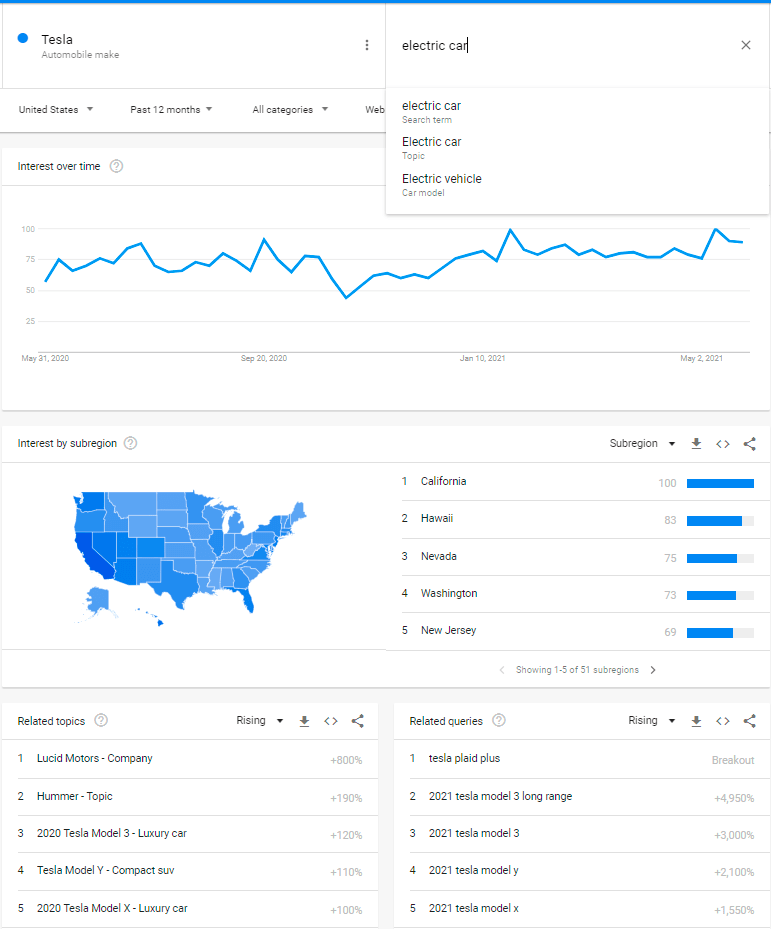
Pro Tip: As you are typing in your query, notice the auto-populated options. Anything that does
not have a "search term" underneath it is a Topic. Topics are aggregated categories, while search terms focus on keywords. The same applies to the "Related topics" and "Related queries" tables. Start broader with a topic, and then narrow down to specific search terms as you analyze the results.
2. Test Out Google Trends for Newsjacking
Do you use newsjacking to help generate content? Then you should definitely use Google Trends subscriptions. Sign up to get the top, most, or all search trends weekly, daily, or as they happen.
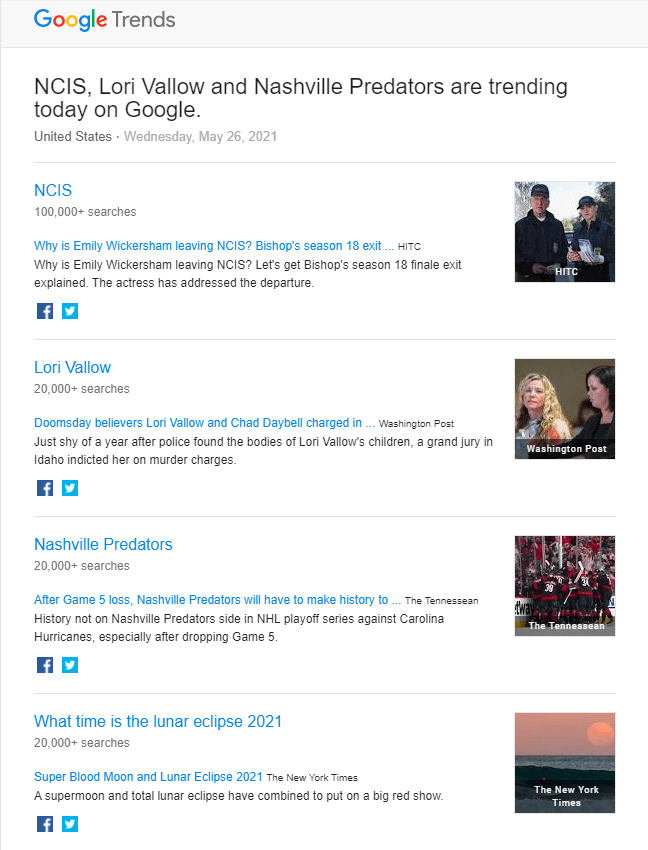
3. Leverage Google Trends for Keyword Research
Many keyword research tools show an expected monthly search volume. Unless you've been tracking that data month-by-month, it's hard to tell if searches for the topic are trending up or down. Google Trends can give you the directional data to pair with your monthly search volume.
While you are checking trends for your keywords, you can find related queries that are on the rise to also consider in your keyword set.
If you aren't sure what people might be searching for, use the topic presented by Google in auto-complete, where possible, and check the "Related queries" filtered by Top queries. Once you've found different terms in the related queries, add, up to five, to compare them.
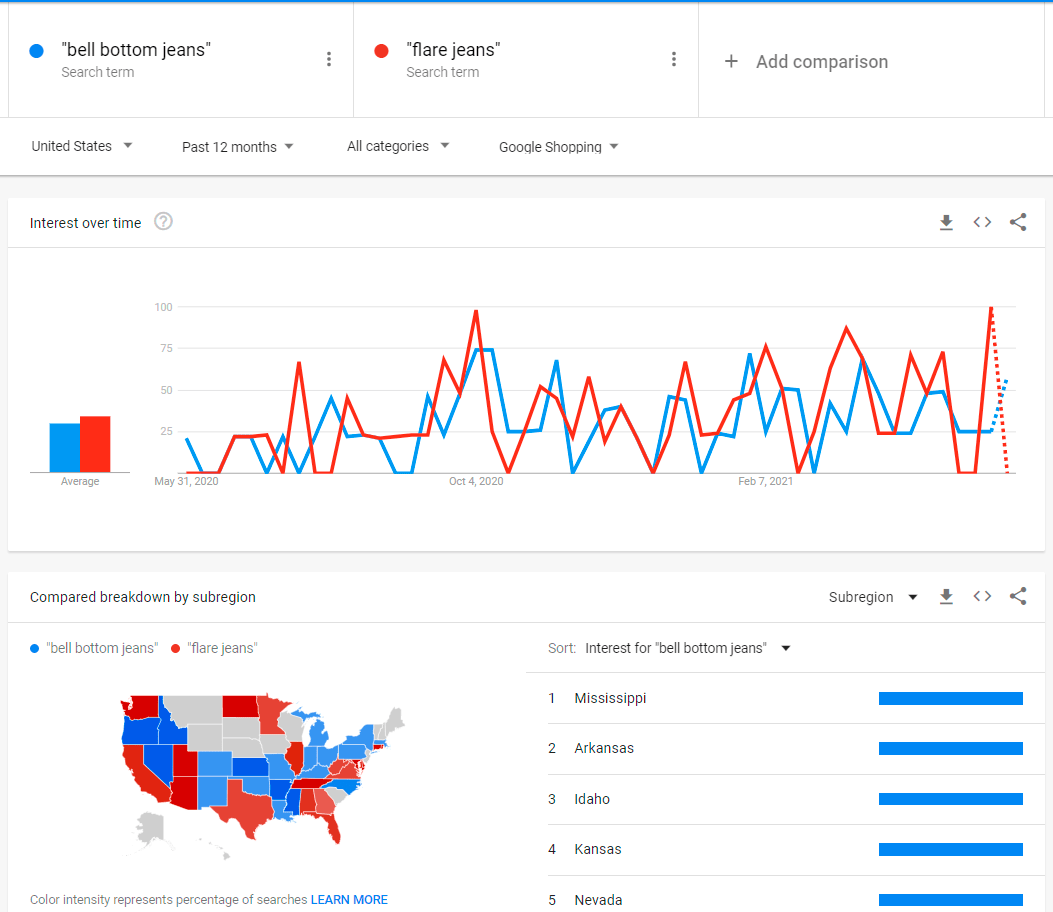
Pro Tip: Make sure you are using search terms. Wrapping your search in quotations ensures the whole phrase is used in that order. You can further refine your search with punctuation to include or exclude certain words.
4. Use Google Trends for Product Innovation
Are you looking for insights into the latest colors, materials, or styles for your product? Suppose you start broadly with a topic in Explore.
In that case, the "Related queries" filtered by Rising can surface trending colors, materials, or other product innovations and indicate how much the interest has increased in the selected time frame. Those marked with Breakout show a significant increase from the previous period, growing more than 5000%.
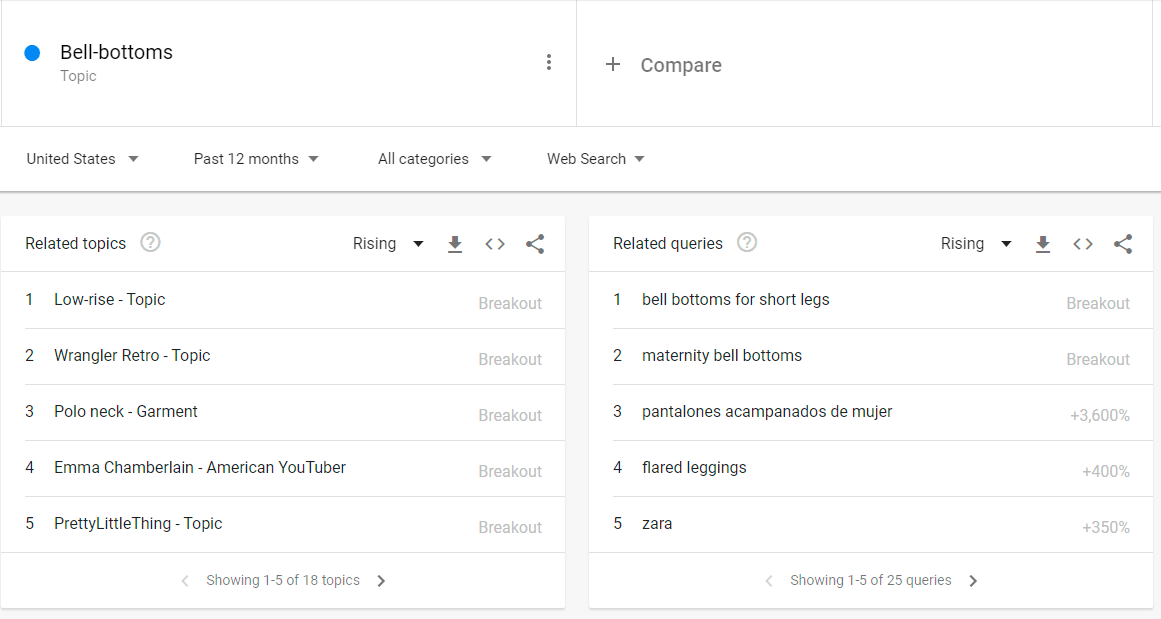
5. Employ Google Trends for Topic Clustering
Hopefully, you understand the difference between search terms and topics in Trends by now.
With topics, Google Trends can help simplify your topic cluster strategy. As you search for a term, Google will provide you with topics instead of just search terms, and once one is selected, lists "Related topics", too. You can get a sense for how Google News helps build relationships between topics by checking out the real-time search trends report.
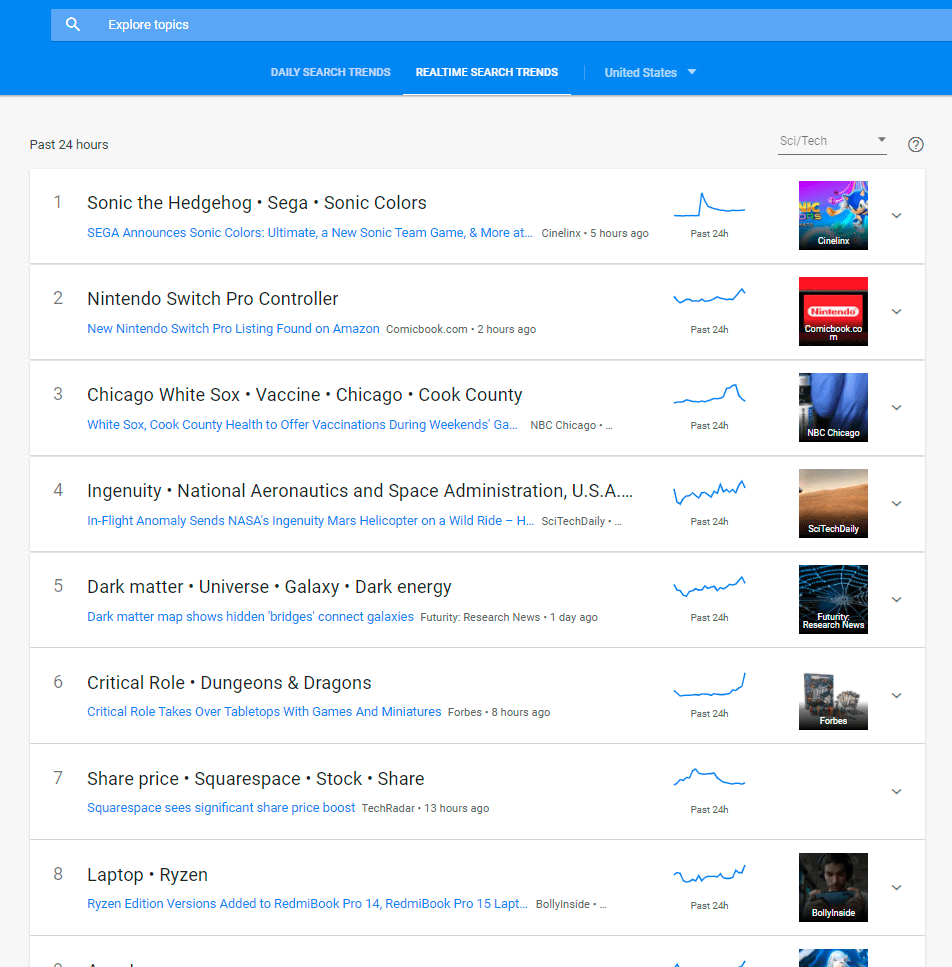
We can go even broader than topics, though. Once you've selected a term, you can then choose a Category. While these are meant to refine your search query, you can remove your search after a Category has been selected and be left with queries and topics tied to the high-level category.
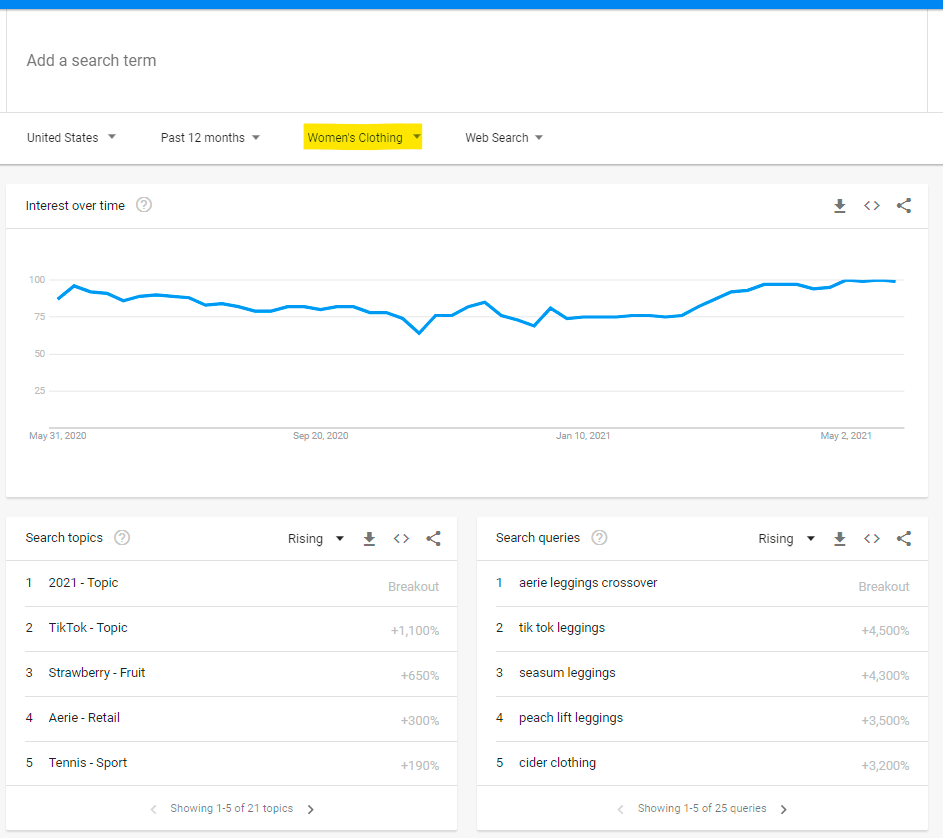
6. Test Out Google Trends for Analyzing News Publications
Are you pitching to or working in the news? Then you want to dig into the Trending Searches data.
As mentioned before, the real-time trending searches lists how many Google News articles have been created about a trending topic each hour. Once you select a topic, the bar charts show the newly-added articles that hour and the cumulative total. You can see how the news may lead or follow the search trend.
The articles listed are the top articles based on the Google News' ranking system, per Google. If you subscribe to specific topics, you can monitor which publications rank well.
Focus on pitching those publications that are regularly featured on your topics. If you are a publisher, audit those competitors to see if you can update your structured data or Publisher Center information to get on their level.
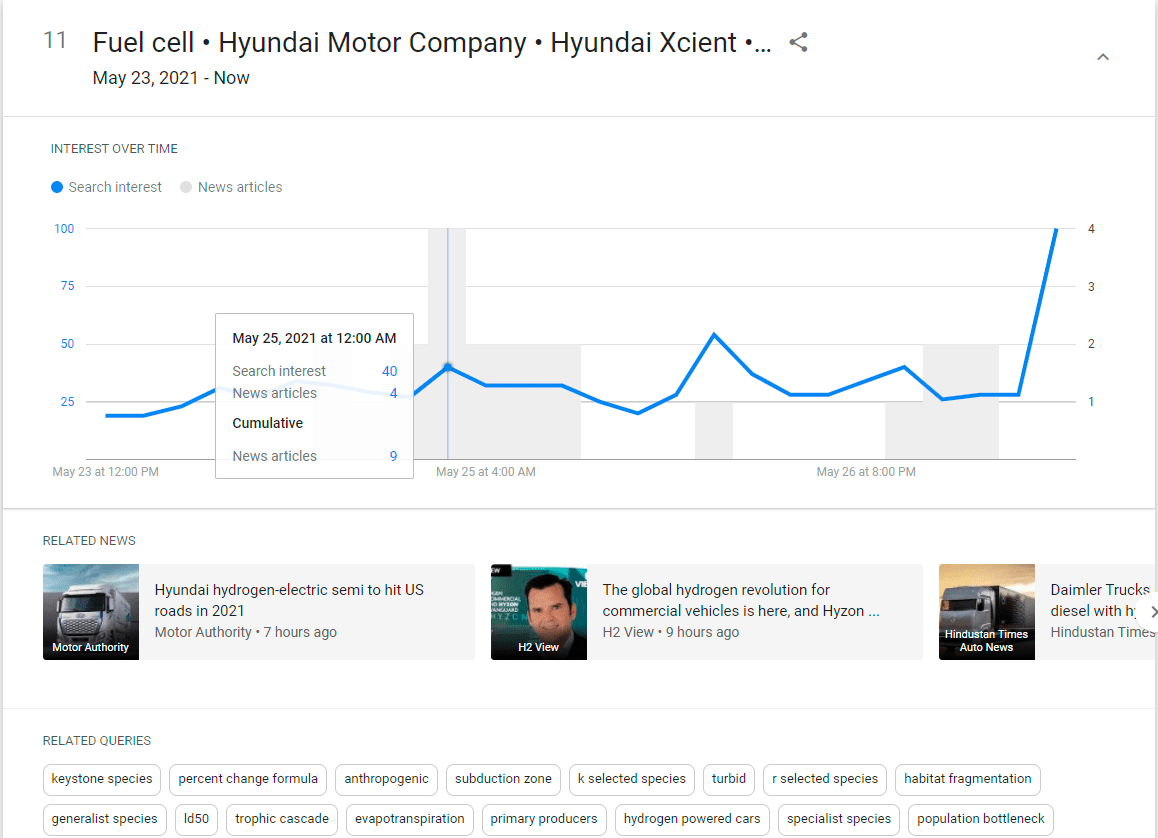
Ready to start exploring? Dive into Google Trends now, and see the unique ways you can leverage the tool for your own business needs.
source https://blog.hubspot.com/marketing/google-trends
![→ Download Now: SEO Starter Pack [Free Kit]](https://no-cache.hubspot.com/cta/default/53/1d7211ac-7b1b-4405-b940-54b8acedb26e.png)









0 Comments